High-Performance Landscapes
Learning Objectives:
- Outline the types of carbon emissions that landscapes can create.
- Discuss strategies for reducing these emissions.
- Discuss strategies for maximizing the carbon-sequestration capacity of landscapes.
- Describe tools for calculating the carbon impacts of landscape projects.
Credits:
This course is approved as a Structured Course
This course can be self-reported to the AANB, as per their CE Guidelines
Approved for structured learning
Approved for Core Learning
This course can be self-reported to the NLAA
Course may qualify for Learning Hours with NWTAA
Course eligible for OAA Learning Hours
This course is approved as a core course
This course can be self-reported for Learning Units to the Architectural Institute of British Columbia
View course on architecturalrecord.com »
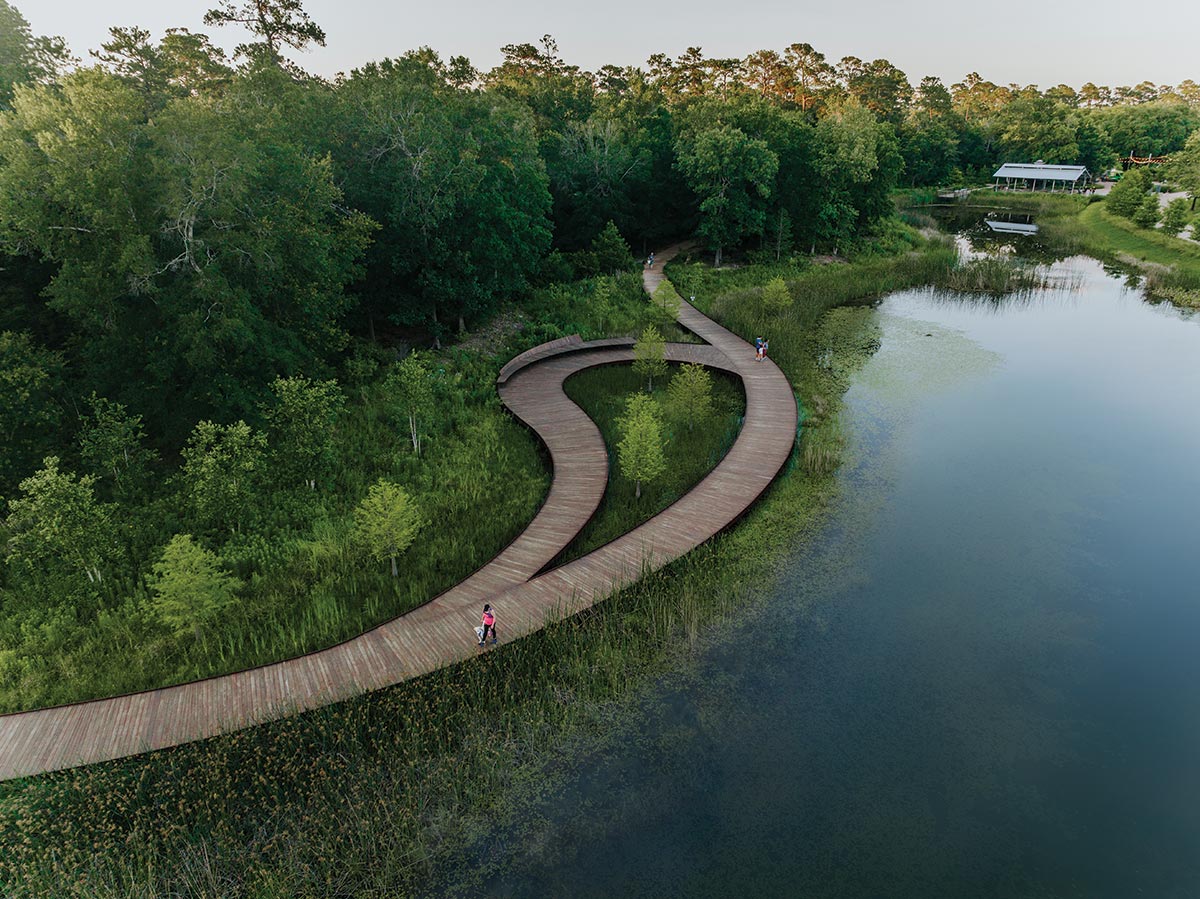
PHOTOGRAPHY: © Nick Hubbard
At Houston’s Memorial Park, Nelson Byrd Woltz’s Eastern Glades project provides a host of ecosystem services.
By now, most architects are aware that buildings are responsible for a huge chunk of humanity’s contribution to global warming. They have probably heard that the built environment contributes more than 40 percent of CO₂ emitted into the atmosphere every year. However, they may not have considered the role of that part of the built environment outside buildings. Landscapes, like buildings, can generate emissions: operational ones, including those from maintenance equipment and use of chemical fertilizers, as well as embodied emissions, from the extraction, transport, and manufacture of materials.
Landscapes, however, also represent an immense opportunity, since their trees, plantings, and soils extract carbon from the atmosphere, sinking it into their biomass. And those who design these landscapes are uniquely positioned to capitalize on this capability. “We are the only design profession that works with living systems,” says Sarah Fitzgerald, climate and sustainability lead at landscape architecture firm SWA. She is one of the coauthors of the Climate Action Plan put forward by the American Society of Landscape Architects. The plan is a multipronged set of goals and initiatives, with the first on the list being to attain zero emissions and double carbon sequestration by 2040.
What does it mean to look at landscape design through the lens of carbon? For landscape architect Thomas Woltz, senior principal and owner of Nelson Byrd Woltz, it means starting projects with deep research into the biological health of the site and intense analysis. He points to his firm’s long-range master plan for Houston’s Memorial Park, whose ecosystems had suffered the effects of drought and hurricanes. Among the plan’s recent phases is a “land bridge,” completed last year, that spans Memorial Drive, a busy traffic artery that had long bisected the 1,500-acre urban park that encompasses wooded areas, trails, picnic areas, and sports and cultural facilities.
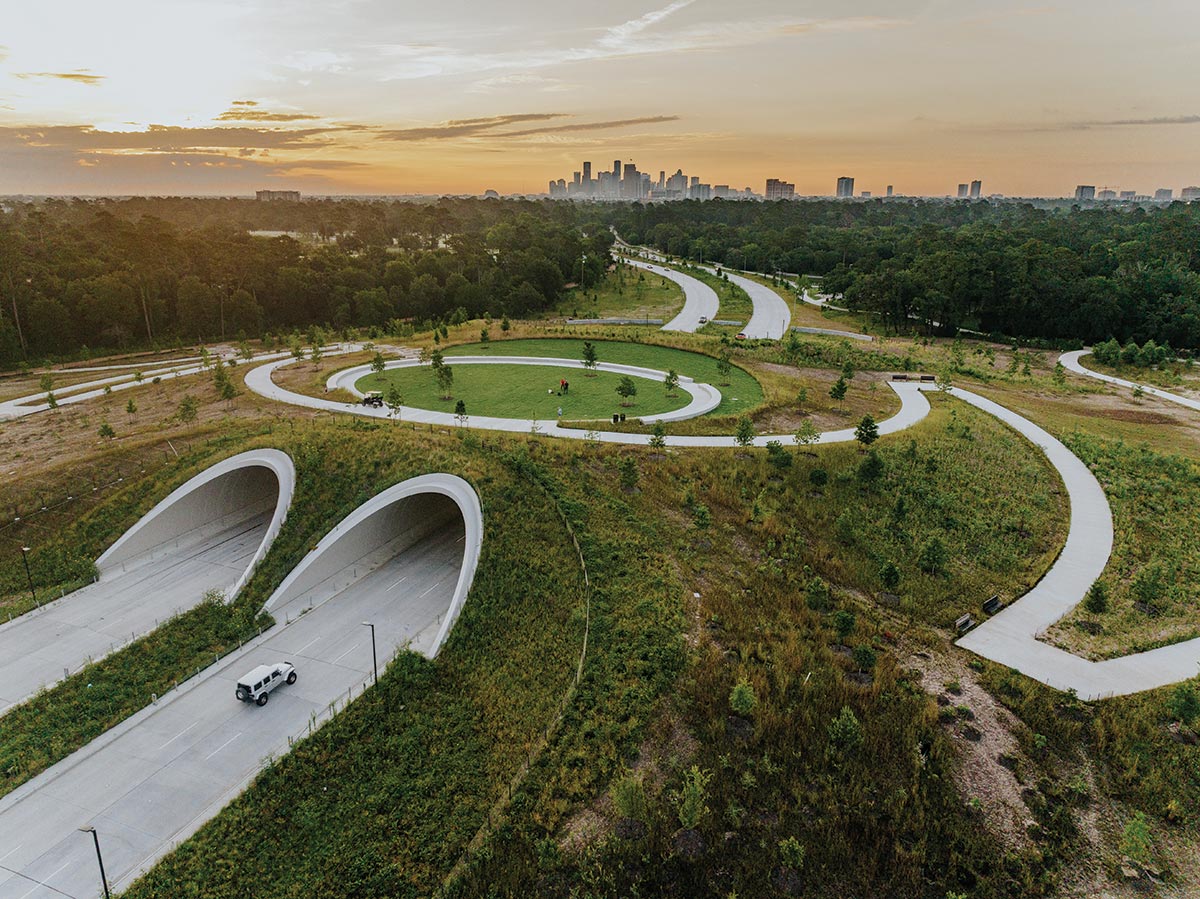
PHOTOGRAPHY: © Nick Hubbard
The new land bridge at Memorial Park in Houston allows for safe crossing of a busy road by people and wildlife and reintroduces native prairie grasses.
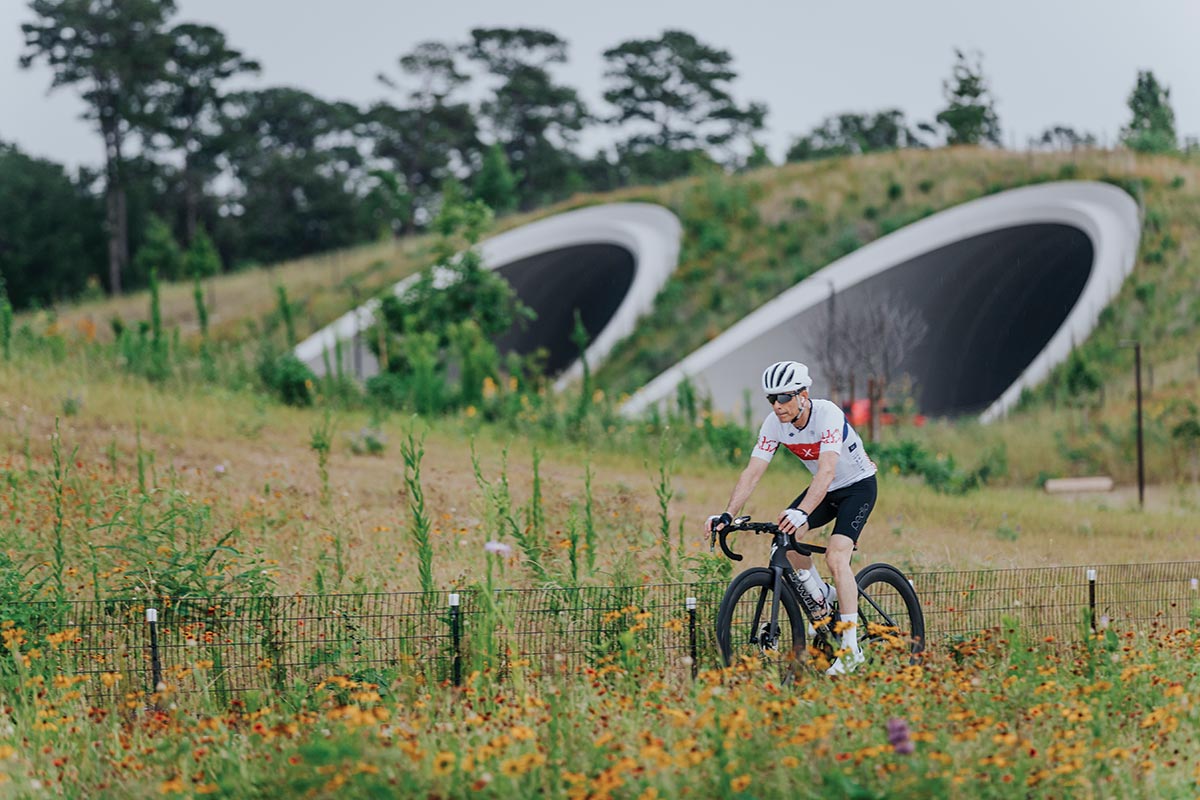
PHOTOGRAPHY: © Nick Hubbard
In addition to providing a safe crossing for people—as well as wildlife—the land bridge restores 45 acres of native prairie, reintroducing Gulf Coast grasses and flowering forbs. Along with the earlier completed Eastern Glades, the project helps manage stormwater, promotes biodiversity, and creates habitat for nesting birds, other small animals, reptiles, and insects. But this new landscape also serves to sequester carbon, especially within the roots of the native grasses, which can grow up to 18 inches deep.
Preparing the soil, which was moved from other locations within the park, and creating just the right medium for the grasses, was a multiyear effort, notes Woltz. It included inoculating the soil with fungi to increase its carbon-storage capacity, he says. Another step entailed planting agricultural crops, such as legumes, and tilling them into the soil before planting the grass seedlings, explains Jaime González, a Houston-based environmental educator involved in the master-planning process in various capacities for more than a decade. The result is an artful natural landscape tied to an ecological story, says Woltz. “It is the authentic landscape of Texas.”
The desire of landscape architects to better understand the carbon impacts of their work has prompted the development of new tools. One of the first is Pathfinder, launched in September 2019 by landscape architect Pamela Conrad, founder and executive director of Climate Positive Design, an advocacy non-governmental organization. The free web-based calculator estimates a project’s embodied carbon, its operational carbon, sequestration capacity, and how long it will take to reach carbon neutrality.
Conrad realized there was a need for such an application while working for a West Coast landscape firm on a sea level–rise adaptation project. The design team considered many aspects of the project’s ecological performance. “But there was little to no discussion of carbon,” she says. “The tools just didn’t exist. Especially beyond buildings.”
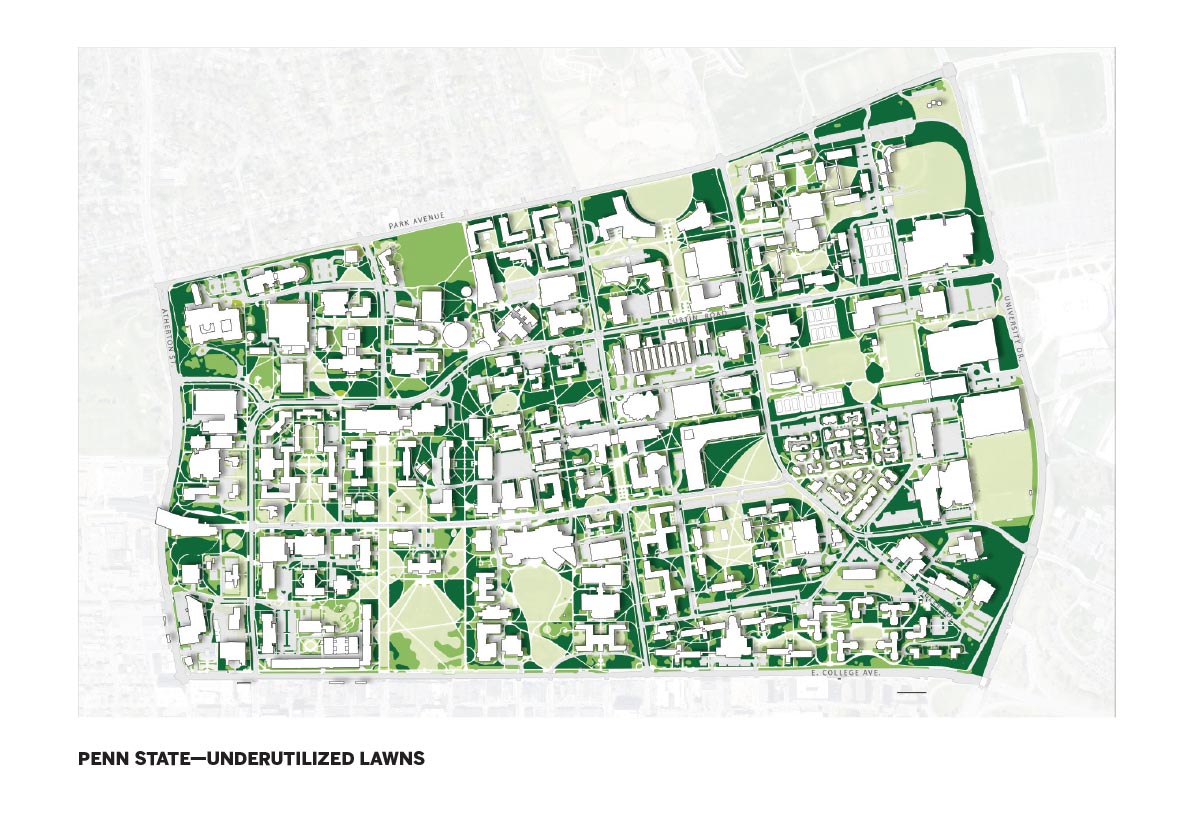
Image: © Stimson
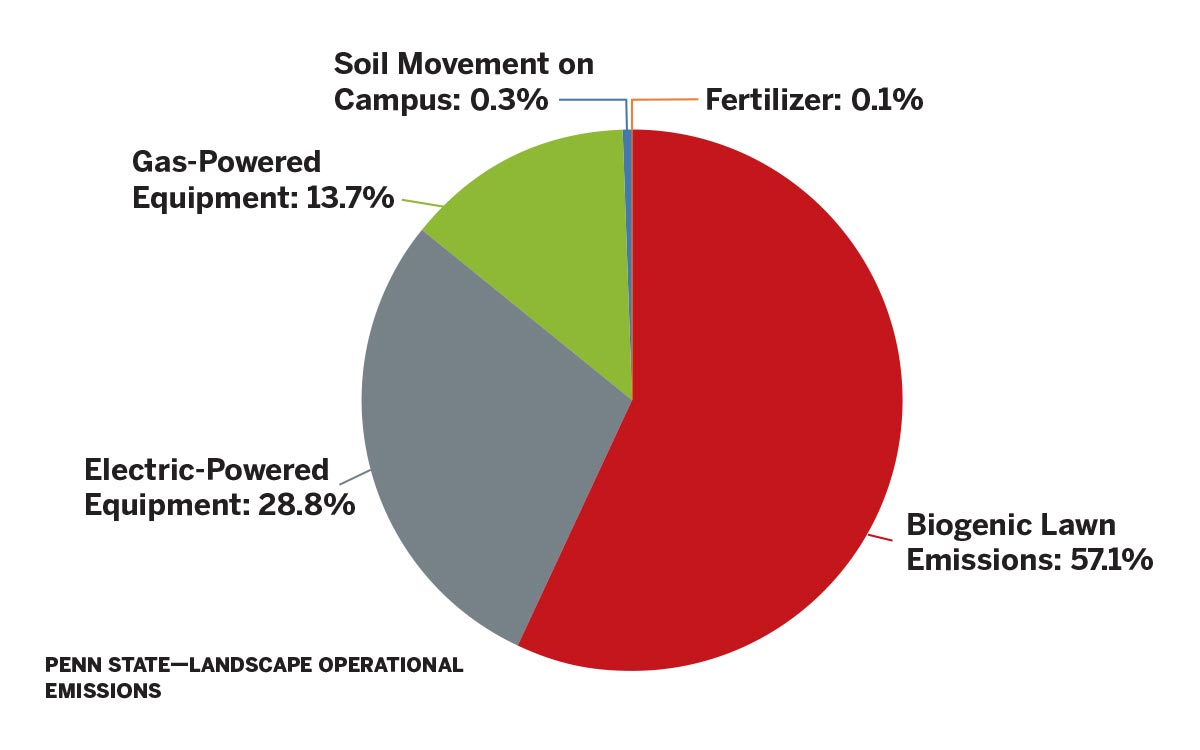
Image: Climate Positive Design
A study of Penn State’s grounds revealed that lawn clippings are responsible for the majority of the landscape’s operational footprint and proposed converting underutilized lawns to less carbon-intensive plantings.
Landscape and architecture firm Sasaki has also developed a tool called Carbon Conscience, which is free and open-source. It is an outgrowth of research by senior associate Chris Hardy and builds on Pathfinder. But unlike that app, it is intended for the earliest phases of a project—before there is a detailed bill of quantities or materials. “If we start considering the carbon impacts during planning stages, we can make those order-of-magnitude decisions,” says Hardy. As the project advances, he points out, it becomes more difficult to consider such questions as: “Do we prioritize reuse? Does the plaza need to be a full block of hardscape? Do we work harder to preserve an existing forest stand?”
Hardy points out that Pathfinder, Carbon Conscience, and those more focused on buildings, including Tally, EC3, and EPIC, among others, rely on different methodologies, metrics, and assumptions. But now there is an industry initiative, facilitated by the Seattle-based Carbon Leadership Forum, to align these efforts. “If everybody is reporting data out in the same way, we can start being more effective,” he says.
















